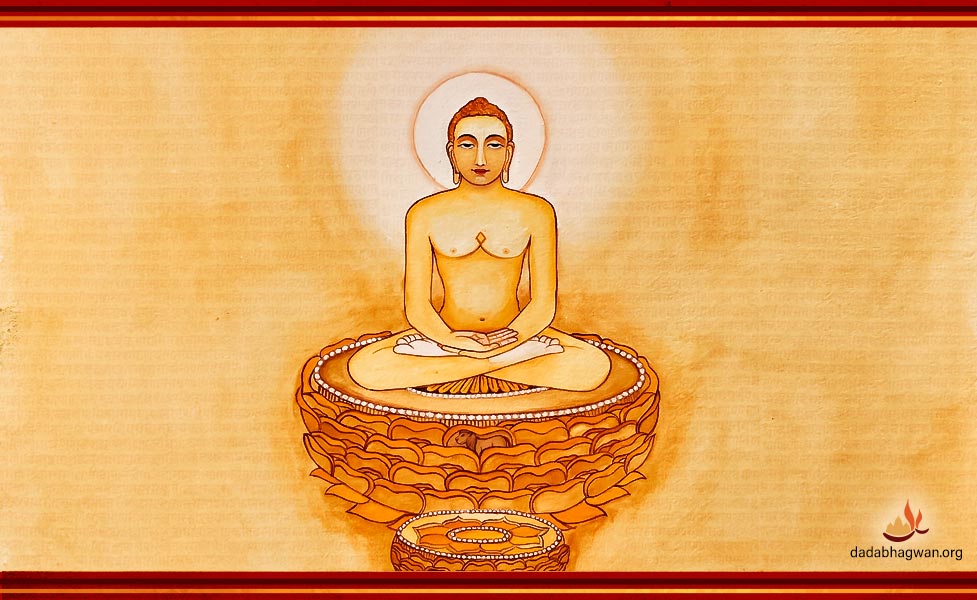Wishing you a very Happy Mahavir Jayanti!
Today is the auspicious day of the birth of Lord Mahavir, and also the Kevalgyan Kalyanak day of Shri Simandhar Swami Ji and other 20 Viharman Jin Bhagwans.
Victory to Trishala’s son, Victory to Mahavir!

Introduction: The Divine Light of Jainism
In the ancient land of India, where spirituality and philosophy flourished, a great soul was born—Mahavir Swami, the 24th and last Tirthankara of Jainism. His life was a beacon of non-violence (Ahimsa), truth (Satya), and renunciation, shaping the spiritual fabric of millions.
But who was Mahavir Swami? Why is he revered as a Tirthankara—a spiritual ford-maker who helps souls cross the ocean of suffering? And how do his teachings continue to inspire modern seekers at places like Trimandir?
The Birth of a Divine Soul
A Prince Destined for Greatness
Around 599 BCE, in the kingdom of Vaishali (modern-day Bihar), Queen Trishala and King Siddhartha welcomed a child who would change the world. Before his birth, Queen Trishala had 14 auspicious dreams, foretelling the arrival of a great spiritual leader.
- Named Vardhamana (“the one who grows prosperity”)
- Raised in luxury, yet showed early signs of detachment
- Exhibited compassion—even as a child, he avoided harming insects
The Turning Point: Renouncing Royalty
At 30 years old, Vardhamana left his palace, family, and wealth behind to seek ultimate truth. He discarded his royal garments, plucked out his hair, and embraced the life of an ascetic.
“The soul is the only eternal truth; everything else is illusion.”
The Path to Kevala Jnana (Omniscience)
12 Years of Extreme Austerity
Mahavir Swami underwent intense meditation and penance:
- Silence (Maun Vrat) for years
- Fasting for months without food or water
- Facing violent attacks from humans and animals without retaliation
The Moment of Enlightenment
Under a Sal tree in Jrimbhikagrama, after 12.5 years of spiritual struggle, Mahavir attained Kevala Jnana (perfect knowledge). He became a Tirthankara—one who establishes the path to liberation.
- Knew all past, present, and future
- Preached the eternal principles of Jainism
- Attracted thousands of disciples, including kings and scholars
The Five Great Vows of Mahavir
Mahavir’s teachings revolved around five core principles (Mahavratas):
- Ahimsa (Non-Violence) – No harm to any living being.
- Satya (Truth) – Absolute honesty in thought, speech, and action.
- Asteya (Non-Stealing) – Not taking what is not given.
- Brahmacharya (Chastity) – Mastery over desires.
- Aparigraha (Non-Attachment) – Detachment from material possessions.
Why Are These Vows Revolutionary?
- Inspired Gandhi’s non-violence movement
- Echo in modern environmentalism (respect for all life forms)
- Form the ethical foundation of Jain business practices
Mahavir’s Legacy in Trimandir and Beyond
What Is Trimandir?
A unique multi-deity temple that honors Mahavir Swami, Shiva, and the Goddess, symbolizing unity in diversity.
How Does Trimandir Keep Mahavir’s Teachings Alive?
- Meditation halls for self-realization
- Discourses on Ahimsa and spiritual growth
- Charity and community service in his name
Mahavir’s Influence Today
- Jainism’s 4+ million followers worldwide
- Universities studying his philosophy
- Global Ahimsa movements
Conclusion: The Eternal Flame of Mahavir’s Wisdom
Mahavir Swami’s life was a testament to inner strength, self-discipline, and universal love. His teachings transcend religion, offering a blueprint for peaceful living.
As Trimandir and Jain temples continue to spread his message, one truth remains: Mahavir’s wisdom is not just history—it is a living guide for humanity.
